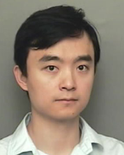
Xiaobo Fan
Research Areas
Authored Publications
Google Publications
Other Publications
Sort By
Power Provisioning for a Warehouse-sized Computer
The 34th ACM International Symposium on Computer Architecture (2007)
Preview abstract
Large-scale Internet services require a computing infrastructure that can be appropriately described as a warehouse-sized computing system. The cost of building datacenter facilities capable of delivering a given power capacity to such a computer can rival the recurring energy consumption costs themselves. Therefore, there are strong economic incentives to operate facilities as close as possible to maximum capacity, so that the non-recurring facility costs can be best amortized. That is difficult to achieve in practice because of uncertainties in equipment power ratings and because power consumption tends to vary significantly with the actual computing activity. Effective power provisioning strategies are needed to determine how much computing equipment can be safely and efficiently hosted within a given power budget.
In this paper we present the aggregate power usage characteristics of large collections of servers (up to 15 thousand) for different classes of applications over a period of approximately six months. Those observations allow us to evaluate opportunities for maximizing the use of the deployed power capacity of datacenters, and assess the risks of over-subscribing it. We find that even in well-tuned applications there is a noticeable gap (7 - 16%) between achieved and theoretical aggregate peak power usage at the cluster level (thousands of servers). The gap grows to almost 40% in whole datacenters. This headroom can be used to deploy additional compute equipment within the same power budget with minimal risk of exceeding it. We use our modeling framework to estimate the potential of power management schemes to reduce peak power and energy usage. We find that the opportunities for power and energy savings are significant, but greater at the cluster-level (thousands of servers) than at the rack-level (tens). Finally we argue that systems need to be power efficient across the activity range, and not only at peak performance levels.
View details
No Results Found
